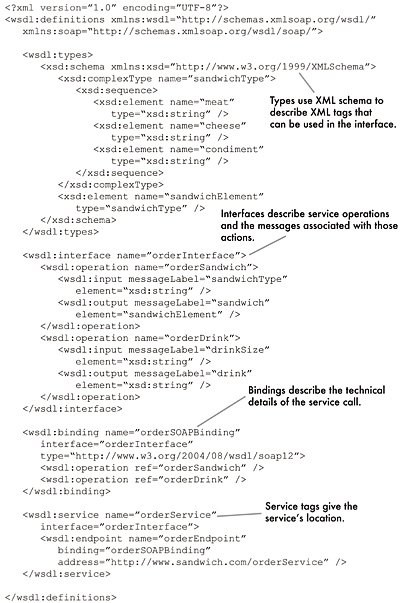Standards Are Dead! Long Live Standards!

Computer science professor and author Andres S. Tannenbaum said, "The nicest thing about standards is that there are so many of them to choose from."
You don't have to be steeped in IT technology knowledge to know how true that is. Even in a relatively focused space like professional media production, we have seen a plethora of standards developed. It may seem blindingly obvious that these standards have value. They enable us to develop products and interchange data.
However, what should also be obvious is that standards are evolving more and more quickly. The average lifespan of a standard is declining. Additionally, it is my opinion that standards that solve small, specific business or technical issues (which could be called microstandards) are far more successful (faster development and successful adoption) than those that try to solve a wide swath of issues.
The subjects I have been discussing in my columns such as service-oriented architecture and business process management (BPM) are not really technologies. They are philosophical approaches to system design and management. But in order to actually realize them, facilities will need access to technologies. There are a number of technological standards which have been developed to support these approaches.

Fig. 1: A look at WSDL and some of its elements. The first standard I think I should mention is the most ubiquitous—XML (extensible markup language). Take a look at any server-based enterprise IT technology today—from wikis to identity management—and XML will likely be right at its heart. Even in our industry, many vendors or organizations like SMPTE have begun to adopt XML as a primary means of engaging in inter-system communication. IT and M&E (media and entertainment) vendors alike are finding this standard to be incredibly useful in expressing many types of data, from system commands to feature film descriptions. So XML is, for all practical purposes, here to stay.
In the area of BPM, I will mention two major standards that have been put forth to describe and orchestrate business processes. One is the Business Process Execution Language. It is an effective and widespread way to capture and orchestrate processes. The other, Business Process Modeling Notation really represents the future of BPM.
BPMN provides a palette of standardized icons that describe a process in a graphical way. BPMN is incredibly useful to process analysts and engineers alike because it presents a business process in such a way that it is easily understandable by those unfamiliar with the standard, but also includes restrictions on process design to ensure consistency. It is the lingua franca of process modeling, and many BPM tools out there today support it. It is used to capture the flow of tasks in a process, including decisions, branches and stakeholders. It makes heavy use of "swimlanes" (i.e., lines in a flow chart) to denote task responsibility, and may even be used to document how messages move from system to system.
The other major process standard in the BPM space is BPEL. While BPMN attempts to document processes in a human-digestible, easy-to-communicate way, BPEL documents processes in a programmatic, XML-based way so that they might be executed inside a process orchestration engine. A BPEL file is not a graphical depiction of tasks and process flow; it is many lines of task identifiers, links and conditions.
WEB SERVICES AND SOAP
Web Services are by far the most popular way to create an SOA-based system. Web Services is an XML-based communication protocol for exchanging messages between loosely coupled systems. Many have heard of Web Services before as an equivalent concept to SOA. In reality, the two are often confused. Web Services is a specific technology that has the capabilities necessary to realize the design principles of SOA. Web Services is a technology; SOA is a design theory. One of the common mistakes seen in marketing material and vendor discussions surrounding SOA is the constant confusion between SOA and Web Services.
An important standard for Web Services is the service interface standard: Web Services Description Language. WSDL is designed to communicate information about how to connect with and use the service it describes. See Fig. 1 for a look at WSDL and some of its elements.

Fig. 2: A look at SOAP and some of its elements. Another major standard that is often discussed in the same breath as Web Services is SOAP (simple object access protocol), an XML messaging standard. SOAP is a protocol for representing the Web Services messages that go back and forth in a Web Services-based SOA. SOAP's purpose is to take XML messages intended for service endpoints and represent them in a way suitable for sending out. SOAP documents are organized in a very simple manner. They contain an envelope (as the root element), which includes both a header and a body. The SOAP header contains message metadata and identification, while the body contains the message itself. See Fig. 2 for a look at SOAP and some of its elements.
GROUP EFFORTS
There is also work being done by various industry bodies in the professional media. SMPTE has not yet taken on any efforts specifically with these subjects, but the various efforts around metadata and file wrappers are certainly helpful in the interchange of data no matter what methods are chosen.
The Advanced Media Workflow Association is heavily engaged in efforts around the application of SOA and BPM in our industry. They have formed a specific group that is studying the subject and examining best practices which can be applied. The European Broadcasting Union has also been examining these subjects for several years now and has groups which are examining common processes and interfaces.
Much is happening with SOA and BPM standards. An apocryphal quote attributed to Bill Gates says, "People always fear change. People feared electricity when it was invented, didn't they? People feared coal, they feared gas-powered engines... There will always be ignorance, and ignorance leads to fear. But with time, people will come to accept their silicon masters."
While change may inspire fear, leaders of organizations know that there are some real standards to help change a success. And there will be even more standards tomorrow. You can count on IT!
John Footen is a vice president at National TeleConsultants and the head of its Software Solutions Group. He is also the co-author of the book, "Service-Oriented Media Enterprise." He can be reached at jfooten@ntc.com.
The professional video industry's #1 source for news, trends and product and tech information. Sign up below.
With more than three decades of M&E experience under his belt, John Footen is a managing director who leads Deloitte Consulting LLP’s media technology and operations practice. He has been a chairperson for various industry technology committees. He earned the SMPTE Medal for Workflow Systems and became a Fellow of SMPTE. He also co-authored a book, called “The Service-Oriented Media Enterprise: SOA, BPM, and Web Services in Professional Media Systems,” and has published many articles in industry publications.

